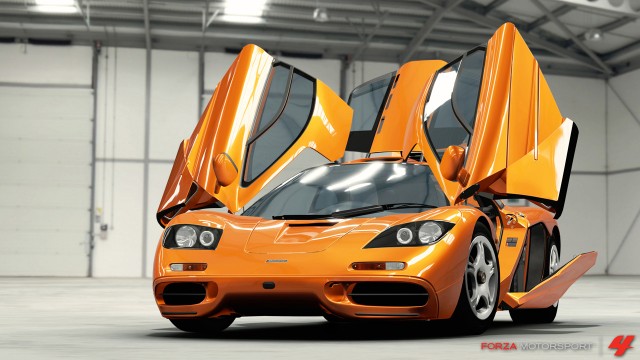
There were several aspects about Forza that are worth noting with the latest in the series. We’ve already covered the realism and controls in a previous post, and while we won’t necessarily get to the community stuff we can appreciate the improvements that are coming. Potentially the biggest announcements from Turn10 relating to the game are based around its use of Kinect. I spent a good chunk of time with the game at this year’s E3 playing with the integrated features, and came away partially impressed.
The first information we saw about the integration of Kinect into Forza 4 was at last year’s E3, where Microsoft showed us the innovative “Autovista” feature that lets us virtually “walk around” a car to examine its details. This year, Autovista is fully flushed-out, offering a virtual showroom for several high-profile vehicles within the game. I say “several” because, much like the situation with Gran Turismo 5, fully rendering an interior and exterior of a vehicle to infinite detail is not only a manpower drain but also memory-heavy. The game would end up being 6 discs long and take 4 years to make.
Instead, Turn10 opted to select several of its top-tier vehicles for the feature. I couldn’t get an actual number from the representative during my demo, but it falls somewhere between 5 and 50, apparently. It’s a little disappointing that I won’t be able to take a peak under the hood of an Audi TT RS, but the R8 will more than suffice.
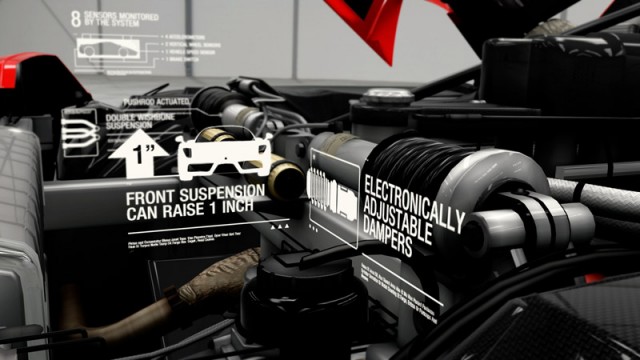
When it came to the actual implementation, I was thoroughly impressed for a variety of reasons. To walk around the car, I simply needed to lean one way or another, lean in to zoom in, lean back to zoom out. Details about the engine, brakes, and even exhaust pipes. I peaked around the front and back, and saw some absolutely incredible details that, as a car nut, gave me boners. It worked just as promised.
Autovista as a concept is a great idea, and can potentially spill over into other games to look at character models, weapons, and landscapes. Heck, it could even be a pretty solid marketing tool, leading into a free virtual showroom on the Xbox dashboard for potential car buyers to do walk-arounds of vehicles that they’re interested in purchasing.
I then had a chance to try the “invisible steering wheel” mode, which amounts to holding my hands out in front to mimic turning a wheel in space. This is where the Kinect implementation breaks down. Does it work? Yes. It works fine. If you’ve played Kinect Joyride then you basically know how the mode functions. The representative reiterated that this isn’t for core gamers, and is meant to (like the aforementioned wireless steering wheel) bring in the casual crowd.
The idea felt shoe-horned, though. Kinect Joyride worked fine because the cars were deformed and cartoony, and the game was based on the light-hearted kart racing genres of yore. Forza, on the other hand, is super-realistic and relies on replicating real drive mechanics, the rumble of engines and pavement, and precise controls. The addition of Kinect takes that all away, and doesn’t add in the free-wheeling and fun kart racing. It just feels wrong. I’d imagine that no one who buys Forza will be buying it for this mode, and it’s certainly not bringing any new buyers to the game, so including a plethora of controls for the sake of it may be a big unnecessary speed bump.
See that video above? That’s the head tracking of Kinect in Forza 4. Something’s not quite right, though, is it?
I had a chance to also try the much-vaunted Kinect head tracking mode. Turn10 had set up a nice rig in their booth with a floating screen, steering wheel, and racing seat. The set-up was comfortable, and with the 42″ screen in front of me the idea was that the user could turn their head toward one side or another to tilt the image on the screen, allowing for peeking around corners and checking blind spots. The issue? It’s not a natural function. When playing the game I would move my eyes to look around the screen, not turn my head. The precision of Forza requires quick glaces as opposed to full head turns. The video above illustrates this. I guess if the screen is 65″ and right in your face, you’re kind of forced to turn your head. But, with those of us sitting on a couch about 8-10 feet from our televisions it may not be valid at all.
Another concern with the mode was that turning my head took my focus away from the center of the screen — the road in front of me. I needed to keep my eyes centered on the screen, especially around corners, while turning my head. The mode also didn’t necessarily function like how I would have wanted it to. Instead of “meeting me” half-way to get the information to me that I was looking for, I needed to turn my head and wait for the Kinect’s lag to catch up. This could easily be done with a button press or using the second analog stick instead of awkwardly turning my head.
Again, this wasn’t my cup of tea, but as a gimmick may be a selling point to some. It just didn’t seem to work like I’d hoped it would.
Regardless of all of that, Forza 4 is shaping up to be the most accessible racing game in terms of control configurations, allowing virtually everyone to find something interesting in it, whether they intend to play it like a hardcore racer or just ogle the sexy cars in the showroom. It’s hard not to come away impressed, if not simply for everything that Turn10 is packing into the box.

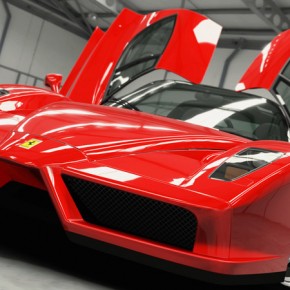
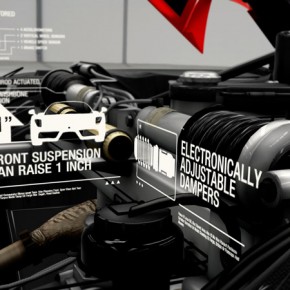
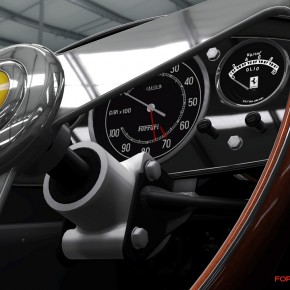
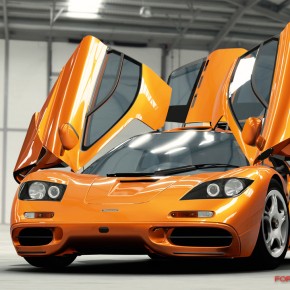
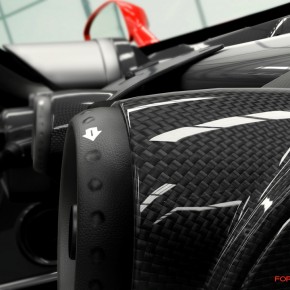
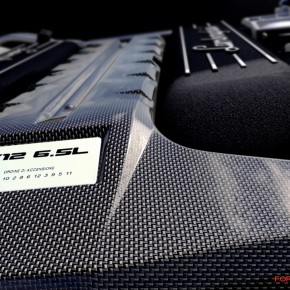

1 Comment